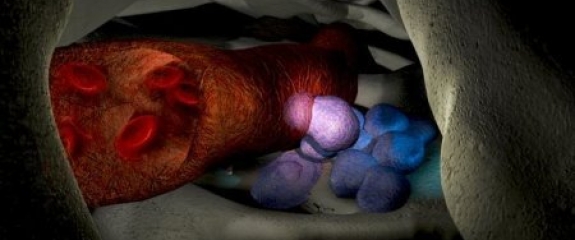New way to harvest stem cells better for donors

Australian scientists have developed a new method for harvesting stem cells, which is less invasive and reduces side effects for donors.
For bone marrow transplantation, stem cells are routinely harvested from healthy donors and used to treat patients with cancers including leukemia.
Current harvesting methods take a long time and require injections of a growth factor to boost stem cell numbers. This often leads to side effects.
The discovery, published today in Nature Communications, reduces the time required to obtain adequate numbers of stem cells, without the need for a growth factor.
The method, developed by a team of CSIRO researchers working within the manufacturing arm of CSIRO with the Australian Regenerative Medicine Institute at Monash, combines a newly discovered molecule (known as BOP), with an existing type of molecule (AMD3100) to mobilise the stem cells found in bone marrow out into the blood stream.
CSIRO researcher Dr Susie Nilsson said her team was able to demonstrate that combining the two molecules directly impacts stem cells so they can be seen in the blood stream within an hour of a single dosage.
"Current treatment requires the patient to have growth factor injections for several days leading up to the procedure," Dr Nilsson said.


